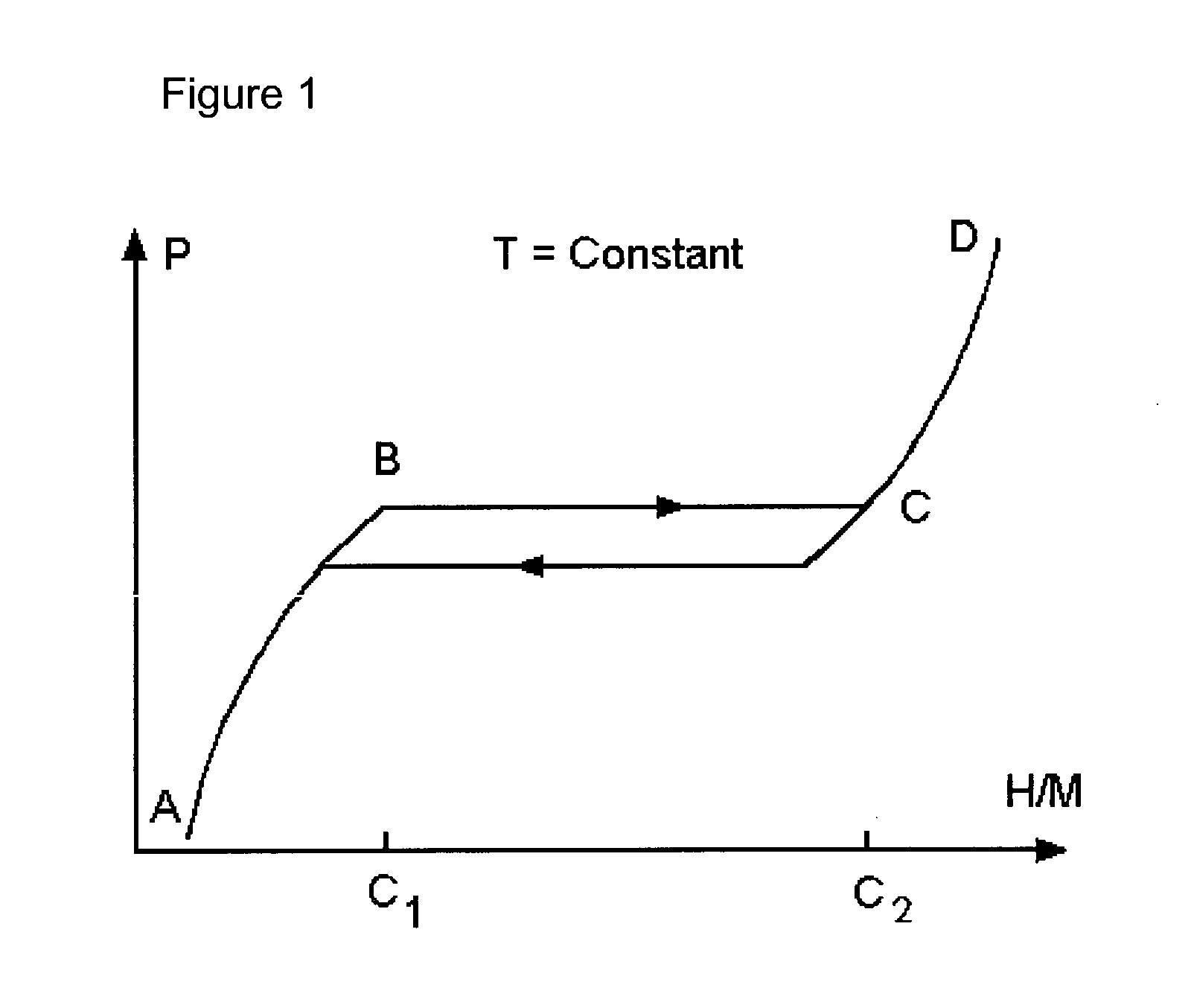Nanoparticle mixtures for hydrogen storage, transportation, and distribution
a technology of nanoparticles and mixtures, which is applied in the field of storage, transportation, and distribution of hydrogen and other low molecular weight fuels using nanoparticle mixtures, can solve the problems of compounding safety concerns, hydrides carrying both weight and cost penalties versus compressed hydrogen, and difficult and expensive storage of hydrogen and other low molecular weight fuels
- Summary
- Abstract
- Description
- Claims
- Application Information
AI Technical Summary
Benefits of technology
Problems solved by technology
Method used
Image
Examples
example 1
Hydrogen Storage Using Palladium Nanophase Particles
[0142] One kilogram of 30 nm palladium nanoparticles is placed in a low pressure container with an aperture for hydrogen gas input and output. A heating coil is wrapped around the container for hydrogen release. The nanoparticles are wrapped in a spiral wound hydrogen permeable membrane to avoid particle blow out.
example 2
Hydrogen Storage Using Inexpensive Nanophase Particles
[0143] One kilogram of iron nanoparticles with average diameters of 50 nm are held within a hydrogen permeable bag. The bag is expandable to contain the nanoparticles even if the volume within the bag quickly changes. The bag may have pores smaller than 40 nm. The bag is held within a low pressure vessel that is resistant to hydrogen embrittlement and capable of being gently heated and optionally cooled for hydrogen release / uptake.
example 3
Hydrogen Storage for Portable Devices
[0144] A metal cylinder, with a 4 cm inner diameter, a pressure release valve, and an openable gas-tight outlet is filled with a mixture of nanoparticles. Over 99% of the nanoparticles are FeTi. Under 1% of the nanoparticles are palladium. The nanoparticles are not perfectly spherical, but have an average equivalent spherical diameter of 50 nm. At least 96% of the nanoparticles have equivalent spherical diameters between 10 nm and 100 nm. Many of the nanoparticles may sometimes be held together by van der Waals forces or other forces of surface attraction. The nanoparticle mixture is placed in sintered metal tubes. The tubes are placed in the cylinder. The metal tubes are permeable to hydrogen, but hold the nanopowder. The nanoparticles are partially held in place by caking and otherwise clogging the pores in the sintered tubes. The metal cylinder is connected to a fuel cell through a miniaturized pressure regulator.
PUM
| Property | Measurement | Unit |
|---|---|---|
| Fraction | aaaaa | aaaaa |
| Nanoscale particle size | aaaaa | aaaaa |
| Nanoscale particle size | aaaaa | aaaaa |
Abstract
Description
Claims
Application Information
 Login to View More
Login to View More - R&D
- Intellectual Property
- Life Sciences
- Materials
- Tech Scout
- Unparalleled Data Quality
- Higher Quality Content
- 60% Fewer Hallucinations
Browse by: Latest US Patents, China's latest patents, Technical Efficacy Thesaurus, Application Domain, Technology Topic, Popular Technical Reports.
© 2025 PatSnap. All rights reserved.Legal|Privacy policy|Modern Slavery Act Transparency Statement|Sitemap|About US| Contact US: help@patsnap.com


